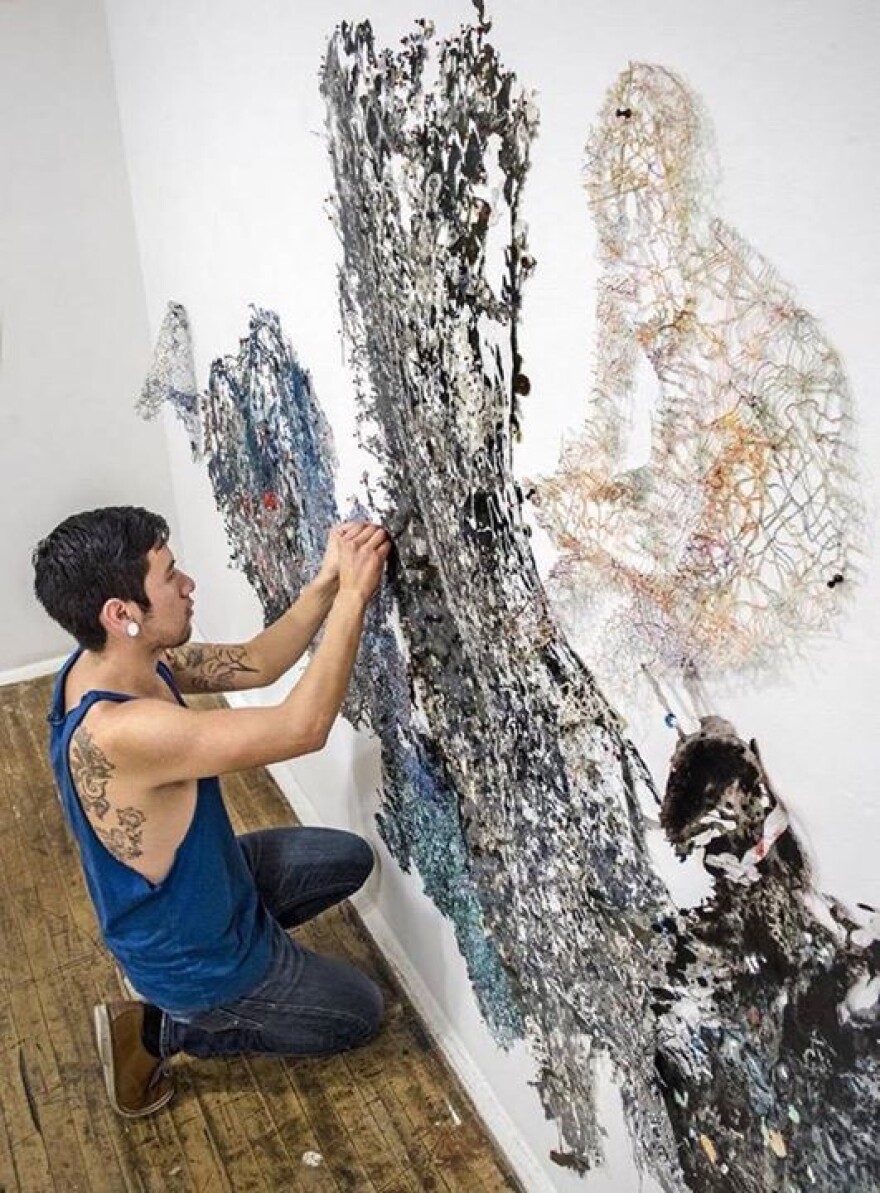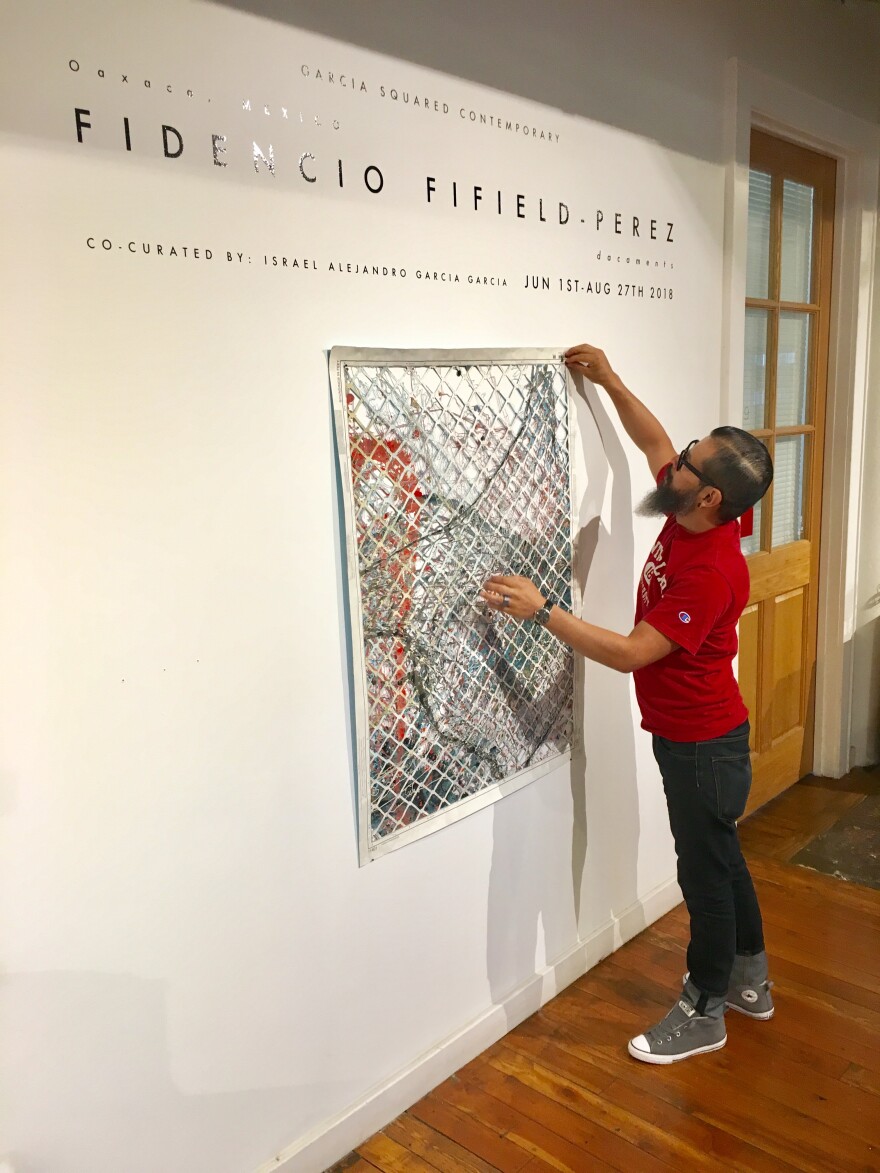As a second grader growing up in North Carolina, Fidencio Fifield-Perez was the school cartoonist. He won a few awards and certificates, and a local newspaper wrote an article about him. He’d newly immigrated to the United States from Mexico.
Years later, when he needed proof that he’d grown up in the United States in order to gain DACA (Deferred Action for Childhood Arrivals) status, his early art skills came in handy because those awards and the newspaper story provided documentation of his childhood.
“My body, who I am, is so tied to this insecure condition, which is to be undocumented,” Fifield-Perez says. “So, even when I don’t want to make work that is classified as ‘Latino work,’ or ‘undocumented artwork,’ even when I try to stray away, a lot of the politics of who I am as a person embeds itself within the artwork.”
Since January, he’s been in a tenure-track teaching position at the University of Missouri in Columbia, where a school of visual arts has just been officially recognized within the university.
He's also co-curated “dacaments,” a 16-piece exhibition about the tenuous nature of an immigrant’s life, on view through the end of August at Kansas City's Garcia Squared Contemporary.
As the exhibition’s other curator and gallery owner, Israel Garcia Garcia has long shown a variety of Latino art in his gallery space. But, he says, this exhibition is different from the others — it’s personal.
“I think the narrative he tells is going to touch upon a lot of people’s stories,” Garcia says of Fifield-Perez’s work.
The artist and curator have much in common. They both came to the United States as undocumented immigrants from Mexico at the age of six or seven.

Garcia, who became a United States citizen this year, describes his immigration experience as knowing that he had been in one place, then suddenly finding that he was in another place. He had no control over his location.
It wasn’t until he was an adult, he says, that he fully comprehended the gravity of his childhood situation.
“For those who have been lucky enough to have a status of some kind, you get to breathe maybe a little bit easier,” Garcia says. “But all those issues you were dealing with in the past don’t go away. If you suffered for 30 years, it’s probably going to take 30 years to feel better about your situation.”
One part of that suffering was repeatedly needing to document his movements and paying to have the government examine those documents before passing a judgment.
Just as Fifield-Perez saved every newspaper clipping and report card from school, Garcia saved each paystub from the moment he began working. Each man knew he would need to prove where he’d been, when he was there, and what he’d been doing.
The new exhibition works to impart the fragile nature of undocumented people’s existence through delicate papal picados (Mexican papercutting) made of maps that resemble both fences and nets, and through paintings of houseplants on envelopes used to correspond with the government and with his loved ones.

He’d moved around for a long time, and has been away from his family for nearly nine years. Then for a while, it seemed that everywhere he went someone gave Fifield-Perez a houseplant.
He realized that by surrounding himself with these lovingly gifted plants, he was creating a home. So, he began to paint them onto envelopes, 13 of which are in the exhibition.
Painting a plant on the envelopes, which he refers to as “vessels,” is a way of insisting that in spite of continually proving himself to the government, he’s home — the United States is his.

“I loved putting the plant paintings on top of vessels because it was an actual documentation of my plants, of my home, on these vessels that were supposed to carry applications to prove who I was, to prove that DACA status should be given to me, to prove to the government that I existed,” he says.
He’s mailed off such paperwork every 18 to 24 months since 2013. And this sort of personal touch seems all the more important to him in the face of the dehumanizing way he perceives the media talking about immigrants.
“They use a lot of water references: a ‘surge,’ a ‘wave,’ an ‘influx,’ all these references to a natural disaster coming in that’s specifically devoid of any humanity,” he says. “It emphasizes this image of a nautical disaster.”
The fence-like paper cuttings are overlaid by paintings of nets and created on decommissioned nautical maps from the University of Iowa library, where Fifield-Perez’s husband worked when they were in graduate school. The largest is 10-and-a-half feet square.
Both men say they hope these pieces will, at the very least, put a human face on the anonymous label of “immigrant.” At the most, perhaps they will begin a conversation where once was only silence and anonymity.
“dacaments,” new work by Fidencio Fifield-Perez, 11 a.m. to 3 p.m. Tuesdays and Fridays, appointments on Saturdays between 11 a.m. and 3 p.m., and First Fridays in July and August through August 27 at Garcia Squared Contemporary, 115 West 18th St., Kansas City, Missouri 64108. Call 816-916-4266 for an appointment.
Follow KCUR contributor Anne Kniggendorf on Twitter, @annekniggendorf.



